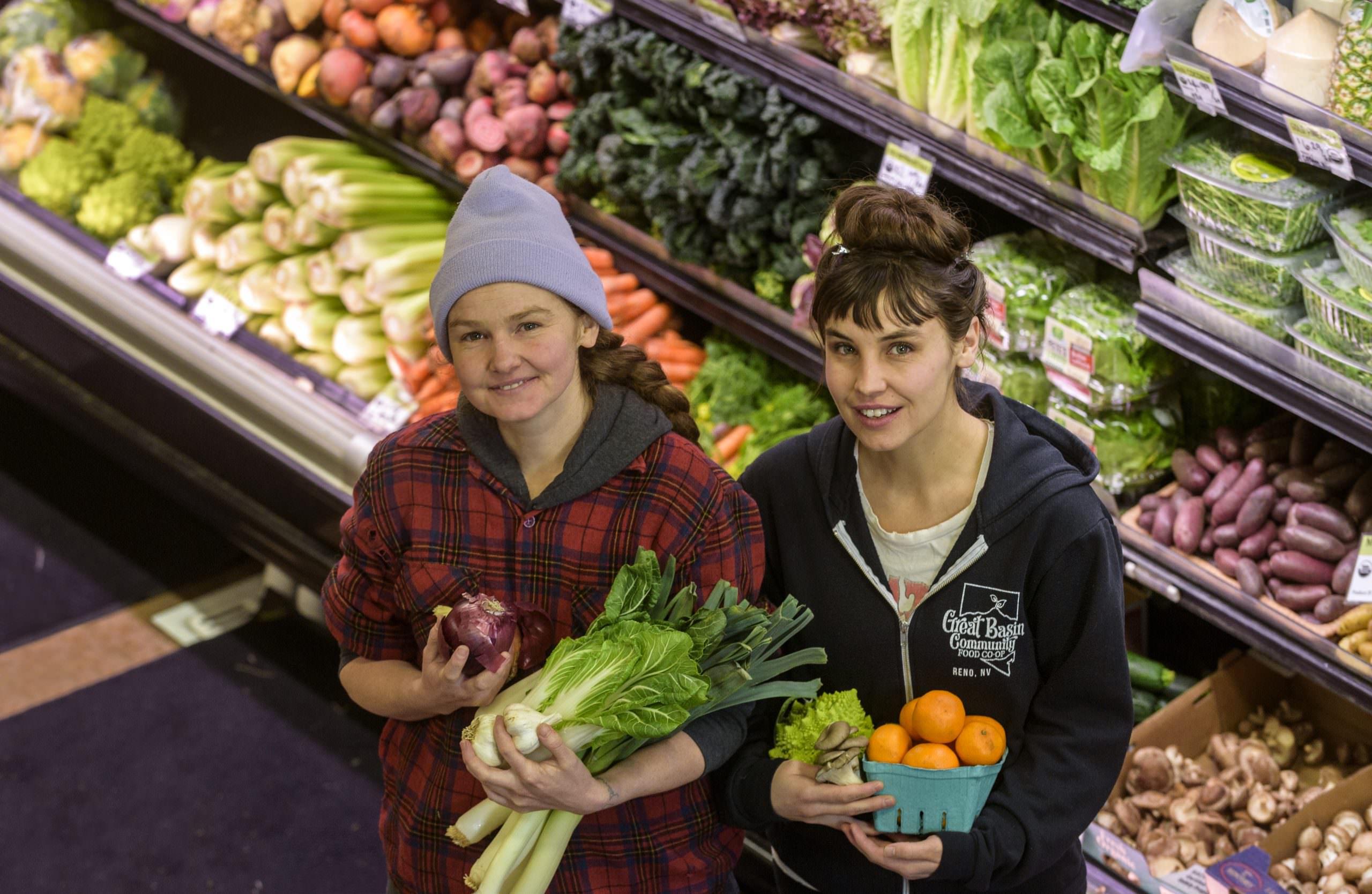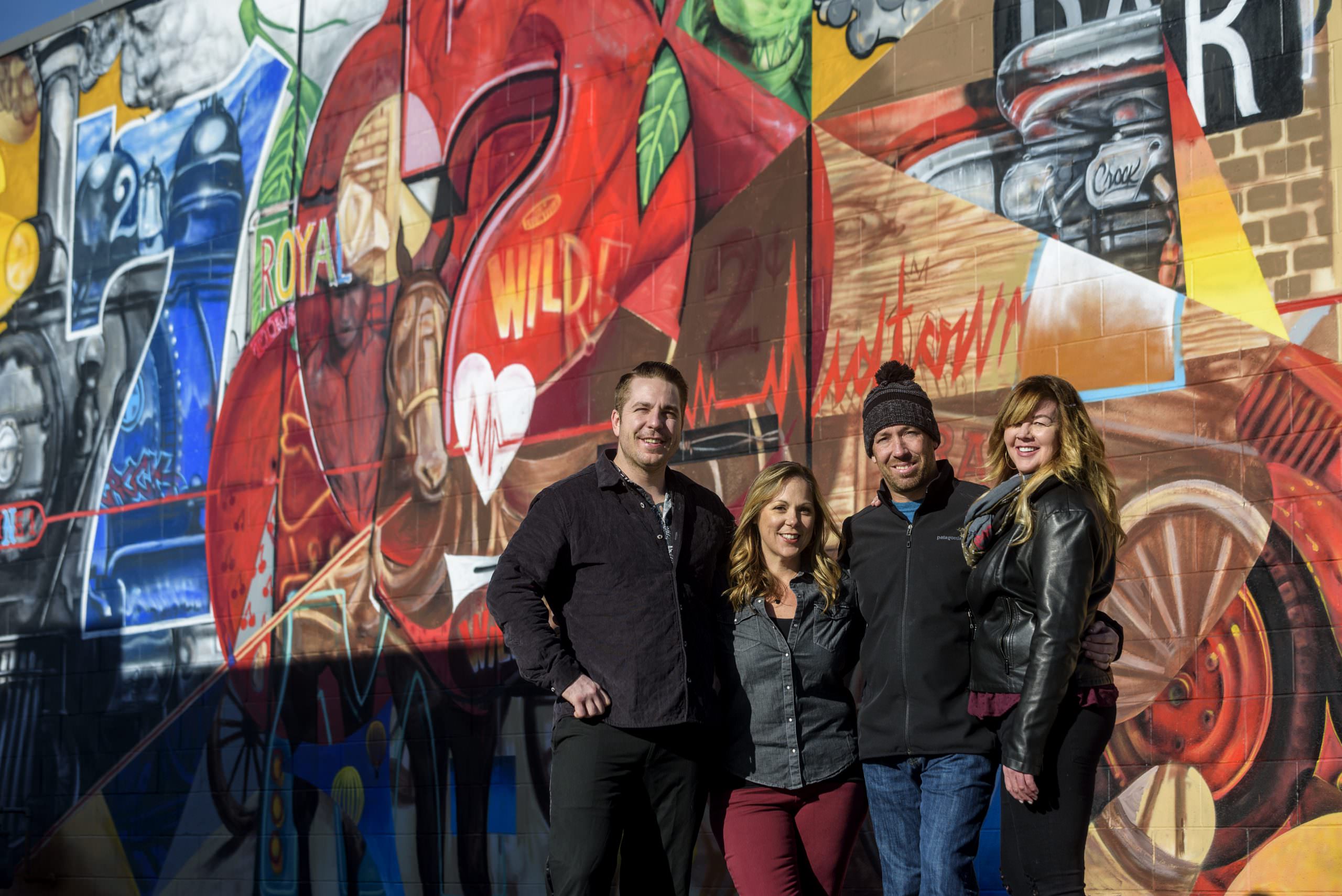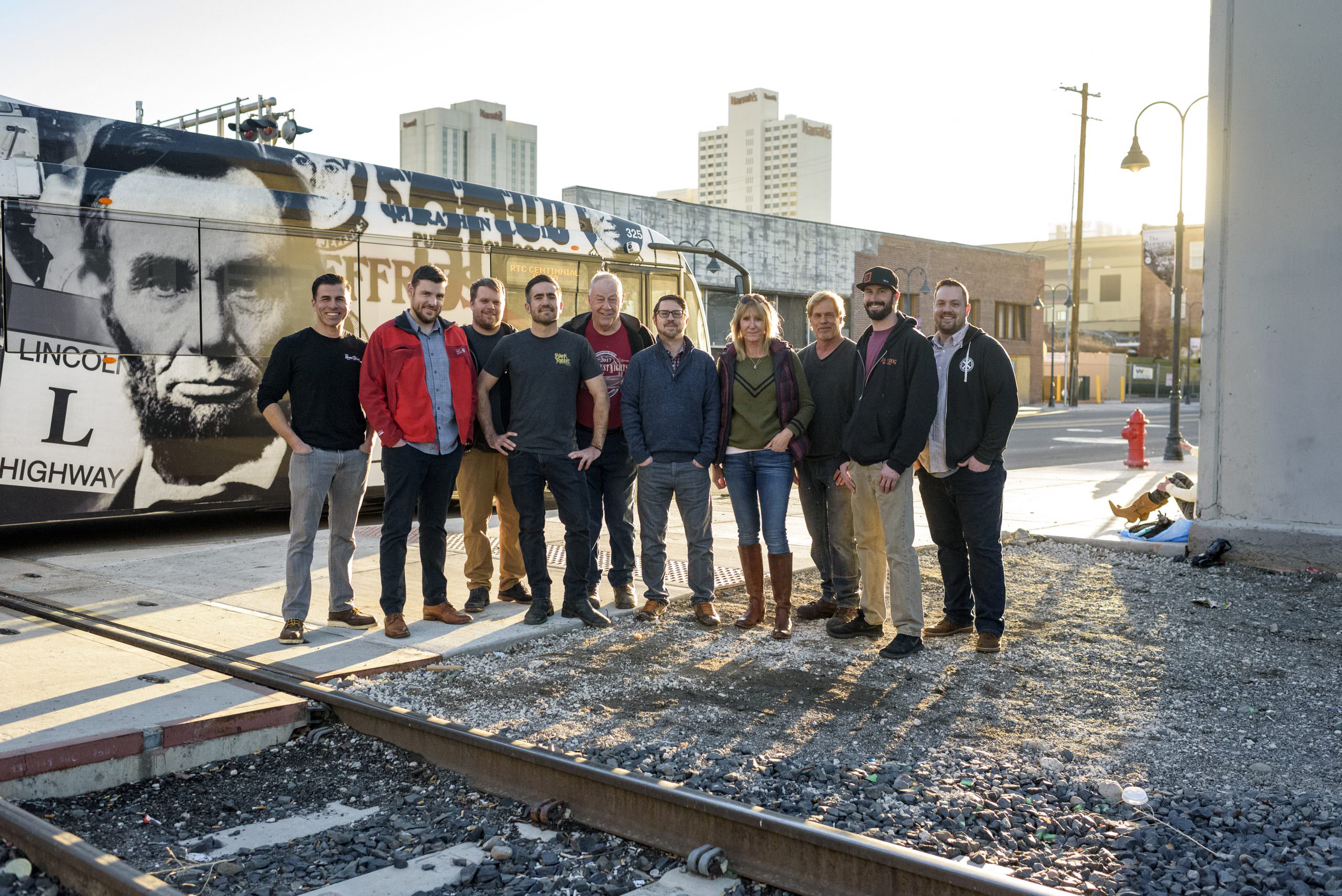Since edible Reno-Tahoe hit stands 10 years ago, our food-and-drink community
has grown significantly and is prospering
Ten years ago this spring, edible Reno-Tahoe published its inaugural issue. On the cover, 5-year-old Flynn Scheibe (now 15) holds a chick at GirlFarm in North Reno as snow-covered mountains loom in the background and grown hens and roosters peck about. Inside the then-new mag, writer Stephanie Stika wonders whether a growing enthusiasm for local food is just a fleeting craze.
“It’s easy to argue that this trend is good for our health, our local economies, and our communities,” she writes. “But what if it’s just a fad — one that, like most fads, too may pass? Perhaps if we look at the rationale behind the movement and understand that it has lasting importance, it will become an enduring way of life rather than a passing fancy.”
A decade later, it’s safe to say that the interest in local food in the Reno-Tahoe region has not waned.
In fact, the systems in place for connecting local farmers to consumers and chefs are stronger than ever. Producers have found ways to extend their growing season in our high desert and mountainous environment. Once-overlooked parts of our cities have transformed thanks to the arrivals of innovative restaurants. Agritourism and food festivals are on the rise. A thriving craft-beer and cocktail scene has emerged.
While this is no doubt a rosy retrospective of the past 10 years in food and farming — which stakeholders are quick to point out has come with its fair share of challenges, climate change, and regulatory roadblocks among them — it’s important to remind ourselves how far we’ve come.
And what better place to start than from where the movement took root — quite literally.
New wave farmers
About 10 years ago, farming in Reno-Tahoe was undergoing a change. And if anyone has a grasp of regional shifts in farming, it’s Rick Lattin, whose family has been tending land in Fallon for more than 100 years.
More small organic farms were opening up, he says, and the partners needed to support them and get their goods to consumers, and chefs were ready for them.
“Our Great Basin Basket (Community Supported Agriculture) and the Great Basin Community Food Co-op all basically came out in the same time frame, a little over 10 years ago,” Lattin recalls. “At the same time, Midtown (Reno) was beginning to take shape, and specialty restaurants were opening up and providing a pretty good market for us.”
Back in 2010, there were 3,750 farmers and ranchers operating across The Silver State, according to the Nevada Department of Agriculture. By 2015, the most recent year of public data, that number had jumped to 4,200.
And many of them have bucked the traditional approach to farming.
Today, there are 40 to 45 urban farms in Reno, Sparks, and Carson City, according to the NDA. Innovators such as Dayton Valley Aquaponics emerged to provide sustainable, year-round produce from its high-tech indoor facility in Dayton. Newcomers such as GirlFarm’s neighbor, Prema Farm, 20 minutes north of Reno, proved that a small-scale farm (1.5 acres) does not mean low productivity.
“The standard for farms, the high number, is producing about $10,000 per acre, and this last season we did about $100,000 per acre,” explains Prema Farm co-owner Zach Cannady.
Cannady is part of a growing number of young (under 40) farmers and ranchers joining the industry and going against the national narrative of a sector threatened by aging and soon-to-retire farmers. What’s more is that from 2002 to 2012, the number of women in agriculture in Nevada has increased by 56 percent, reports the National Agricultural Statistics Service.
The last decade also has brought with it an increase of hoop houses, high tunnels, and greenhouses — many now partially funded by the Natural Resources Conservation Service — which allow farmers in this high, dry climate to extend their growing season.
“We’re doing a small CSA in Reno, Sparks, and Fallon this year that we have running all year, and that just wouldn’t have happened 10 to 15 years ago without these (growing environments),” Lattin adds. “They have had a massive impact on the year-round availability of product for restaurants and CSAs.”
Budding relationships
Since opening Moody’s Bistro & Lounge in Truckee back in 2002, chef and restaurateur Mark Estee has employed the mantra of “fresh, seasonal, and local.” For the man behind dining hotspots such as Reno’s Campo (that he sold in 2016), Liberty Food & Wine Exchange, and chez louie restaurants; Carson Valley’s Overland Restaurant & Pub; and The Union in Carson City, that used to mean 15 farmers showing up at his door with different deliveries.
Today, he, like many other chefs in the area, relies on a food hub to connect him to local products.
“There is a lot more help to buy local food. There is the Great Basin Community Food Co-op’s DROPP (Distributors of Regional and Organic Produce and Products) program. They are Reno’s food hub, bar none,” says Estee, who sits on the co-op’s board. “Today, there’s a lot more communication between restaurants and farmers. There’s an expectation that you should have local food on your menus.”
Local food advocates are emphatic about this: The development of food hubs and co-ops across the Reno-Tahoe region over the last decade has been critical in shaping the food scene.
Seven years ago, the Great Basin Community Food Co-op moved into its current location on Court Street in Reno and launched its DROPP program, which aggregates orders from chefs, sends a “pick list” to farmers, then delivers to restaurants. It was the first program of its kind in the region, and chefs and farmers jumped on board.

From left, Nicole and Amber Sallaberry, founders of the Great Basin Community Food Co-op in Reno
Since opening in 2005, the co-op has grown its network of farmers and producers from five to more than 125. DROPP now delivers to 30 to 40 restaurants every week.
“Now we have a fully functioning commercial kitchen, and we opened our Food Shed Café last year,” says Amber Sallaberry, who started the co-op with her sister, Nicole, in their kitchen. “We do more than $5 million in sales with projections toward $6 million this coming year. We have our own warehouse out in Sparks where we host DROPP, and we employ more than 40 people.”
Up in Truckee, Susie Sutphin followed suit and established the Tahoe Food Hub in 2013. The nonprofit started with five farms, five restaurants, and one delivery van, but it has grown into a local food distributor serving 70 restaurants in the Tahoe Basin and beyond. Three years later, the Fallon Food Hub opened its doors and has been establishing itself in the community ever since.
Diverse dining scene
Following The Great Recession, something interesting started happening in Reno’s Midtown district. In a time when you’d expect people to limit their financial risks, they started opening up independently owned restaurants and bars instead.
“All of those restaurants didn’t happen when the market (improved). It all happened in a time when it was down. That local relationship between farmers and food really kept the economy alive,” recalls Wendy Baroli, co-owner/farmer of GirlFarm, which started operating commercially in 2008.
The neighborhood welcomed trendy American fare at Midtown Eats, high-end Japanese yakitori at Kauboi Izakaya, and next-level traditional Italian cuisine at Calafuria, to name a few.
Across the region, customers were demanding extraordinary dining experiences, and the chefs happily obliged.
“There are so many great restaurants opening here all the time,” Estee says. “When we first opened Campo (in Reno), we kind of thought that we were at the beginning of the curve, and as time’s gone on, it’s proven that there is so much more room to grow, and I believe there are enough forward-thinking people in our region to keep it going.”
At the same time, the region has continued to develop events around its artisanal food scene, from the summertime Food Truck Friday in Reno to the growing Sample the Sierra festival in South Lake Tahoe. The latter pairs chefs with ingredients and products from farmers, winemakers, and brewers, and their offeringsare voted on by participants.This past summer, Carson City’s Taste of Downtown celebrated 25 years of growing its food festival and the accompanied revitalization of the capital’s downtown. Even edible Reno-Tahoe created two successful annual events: Good Spirits (June 1 this year at The Elm Estate in Reno), in its third year, and Wine + Dine at Dolan Lexus in Reno in September, in its fourth year.
Craft culture
Over the last decade, the craft beer craze has swept across the region. Today, you’ll find 40 craft breweries across The Silver State alone, and more than half of them are pouring suds in Northern Nevada. In South Lake Tahoe alone, eight are operating.
“Craft beer is really an aspect of the farm-to-table movement. It’s in that same realm. The local brewers are able to source some local grains and hops,” says Don Vetter, co-founder of Reno Craft Beer Week. “You can’t have a fundraiser without a craft beer aspect. Everybody has a beer garden with craft beer, and that’s a reflection of the consumer demanding this. This is a consumer-driven market.”
But it’s not just craft beer that has captured the attention of Reno-Tahoe consumers.
In addition to craft beer, many distilleries opened their doors in the last few years. For example, 10 Torr in Reno distills vodka, gin, and whiskey. Off Old Highway 40, Verdi Local Distillery crafts 11 different spirits, from mahogany whiskey to orange-peel-and-juniper-distilled gin. In Fallon, Frey Ranch produces award-winning spirits, and will release the state’s first aged bourbon this summer. In Minden, Bently Heritage opened on Feb. 9 with a fine suite of gins and vodkas (and will release many other spirits soon). In Zephyr Cove, FOLK Brewing creates kombucha that can be found on tap at restaurants and bars across the region.
“There’s a real desire for anything craft,” says Larry DeVincenzi, who opened the hip tropical bar Rum Sugar Lime last April in Midtown Reno. “Craft beer, craft cocktails, craft liquors. It’s certainly not the old days of a $5 drink with a shot and soda from a gun.”
Room to grow
For Amber Sallaberry, watching a portion of consumers in the region come to understand the importance of “real local food” has been rewarding.

From left, Spencer Shea, owner of Homegrown Gastropub; Kasey and Christian Christensen, owners of Süp; and Anne Archer, owner of Batch Cupcakery, are four of the entrepreneurs who have helped create today’s Midtown District in Reno.
“Communicating that message to people, that this is what real food should cost, and if you’re investing in it, you’re investing in your health, you’re investing in your community and direct environment — that has been the most profound change that has given me hope that we’re going to make it here,” she says.
“I knew that when edible Reno-Tahoe came on the scene, things were changing. If there is enough fervor for a chapter of this prestigious and beautiful magazine, then that’s got to mean really good things,” she adds. “I’m really grateful for its contribution because through its direct research, support, and stories, it’s been a huge part of that shift.”
Publisher/editor Amanda Burden wrote in her first editor’s letter back in 2010, “This is not only a special endeavor for me. It’s a chance to help this region grow healthy, wealthy, and wise by building and supporting a vibrant local food scene.”
And after a decade of shedding light on Reno-Tahoe area farms, ranches, restaurants, breweries, vineyards, and more, through compelling storytelling, it seems safe to say: mission accomplished.
Claire Cudahy is a Zephyr Cove-based freelance writer. She is grateful to edible Reno-Tahoe for giving her the opportunity to meet the amazing community that makes up the Reno-Tahoe food scene and for the publication’s continued drive to innovate in the changing world of journalism. Congrats on 10 wonderful years!


